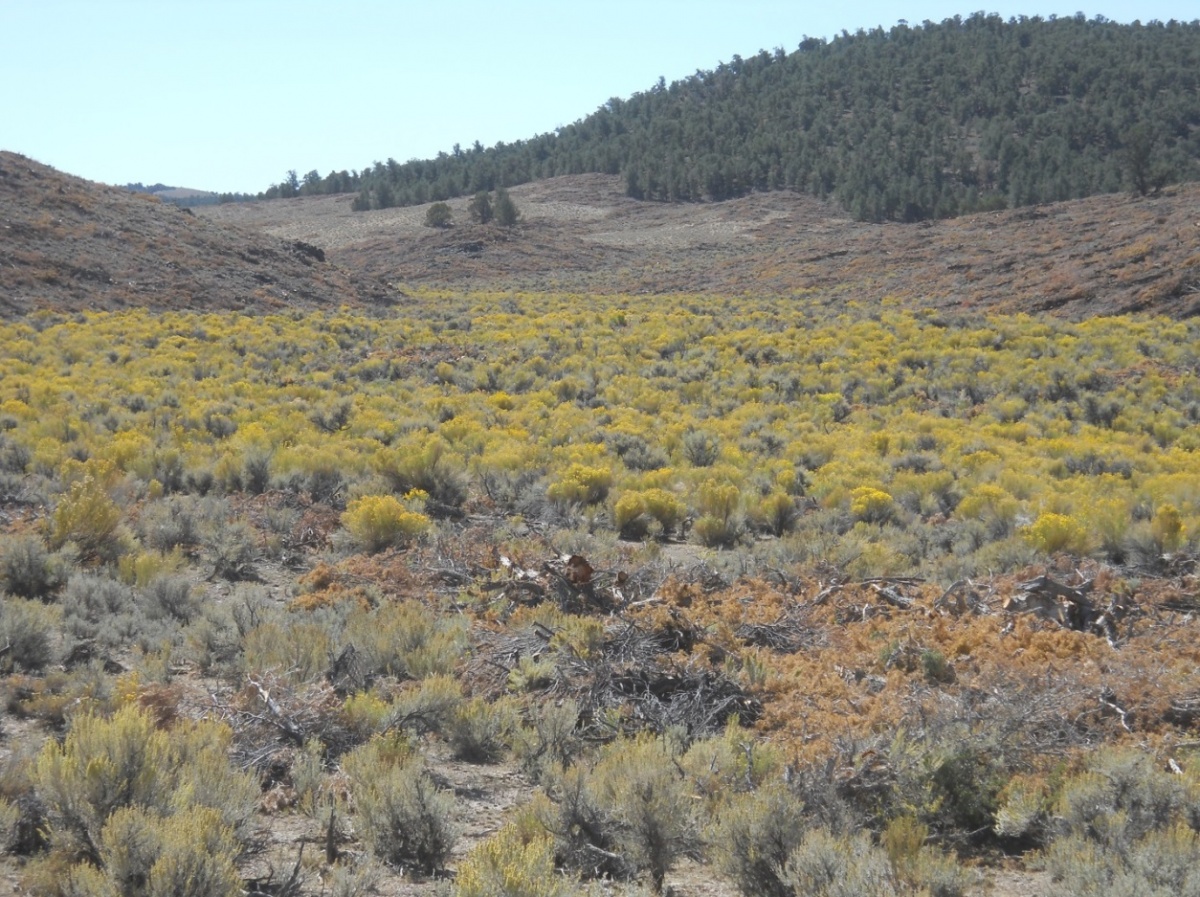Nevada Featured Wildlife Project
Desatoya Mountains Habitat Resiliency, Health, and Restoration Project
The BLM’s Carson City District, Stillwater Field Office initiated the Desatoya Mountains Habitat Resiliency, Health, and Restoration Project in 2012. This project is a landscape-scale level, multi-year habitat improvement project involving multiple partners on BLM lands within the Desatoya Mountains. Partners include the Nevada Department of Wildlife (NDOW), Smith Creek Ranch LTD, the University of Nevada Reno (UNR), the Agricultural Research Service (ARS), Natural Resources Conservation Services (NRCS), Great Basin Bird Observatory (GBBO), Great Basin Institute (GBI), and the U.S. Geological Survey (USGS).

Since 2012, the BLM’s Healthy Landscapes (HL), Wildlife, and Hazardous Fuels program has supported USGS monitoring of greater sage-grouse, UNR hydrological research, and a variety of habitat improvement treatments including wet meadow, shrubland, and woodland wildlife habitat restoration. Vegetation treatments are designed to benefit sage-grouse, pinyon jays, mule deer, and a variety of other wildlife that are dependent on sagebrush, woodland, aspen, and riparian habitats typical of the Great Basin ecosystem.
USGS has been monitoring the sage-grouse population within the Desatoya Mountains since 2013 through radio and GPS marking of 69 sage-grouse. The telemetry monitoring has allowed USGS to study sage-grouse movement patterns (before and after vegetation treatments), nesting and brood-rearing success, and habitat site selection. UNR is currently conducting research regarding the hydrological response of pinyon-juniper removal on the riparian areas within Porter Canyon (Porter Canyon Experimental Watershed). Great Basin Bird Observatory has conducted migratory bird monitoring including using telemetry on pinyon jays.
NDOW has been an integral partner in conducting vegetation monitoring and providing funding, expertise and contracting of vegetation treatments. Currently approximately 6000 acres of vegetation treatments have been or are contracted to be completed.
